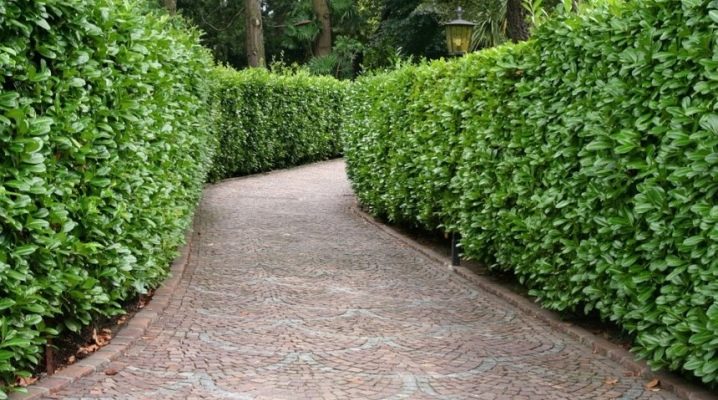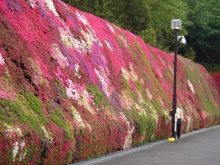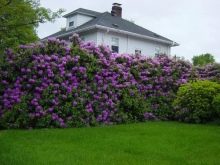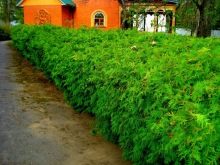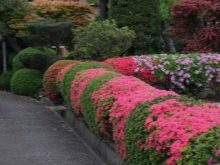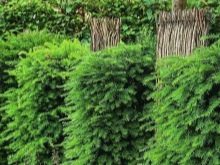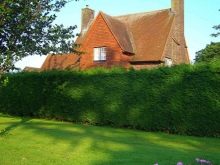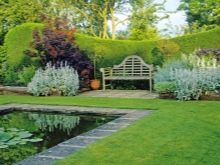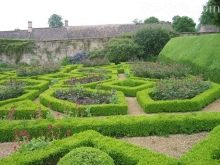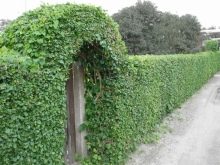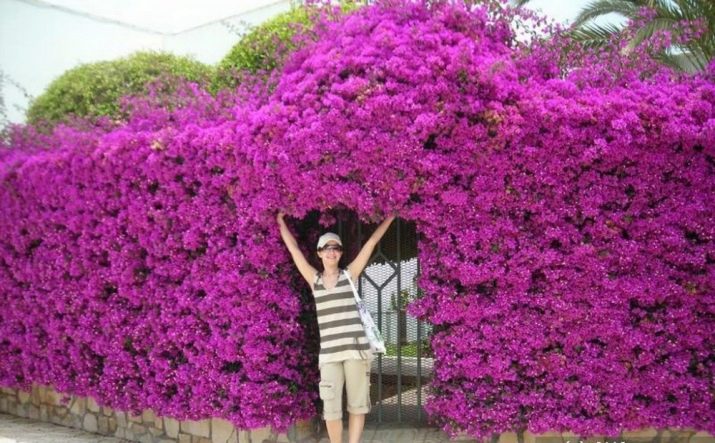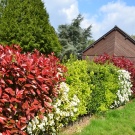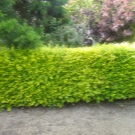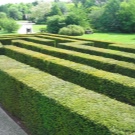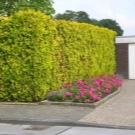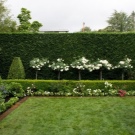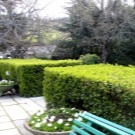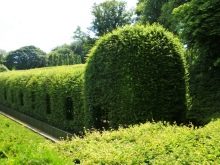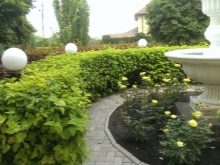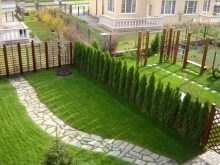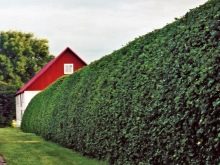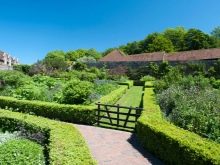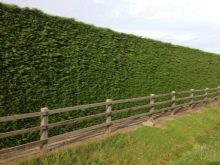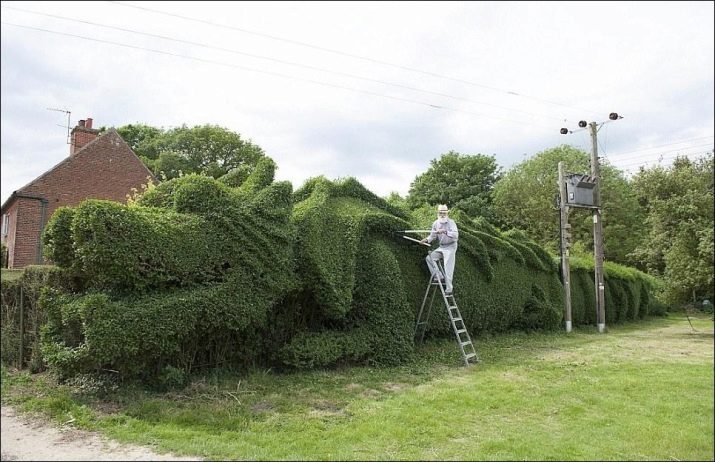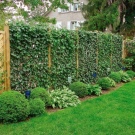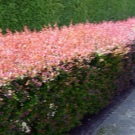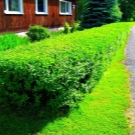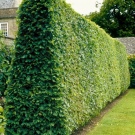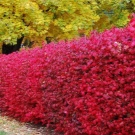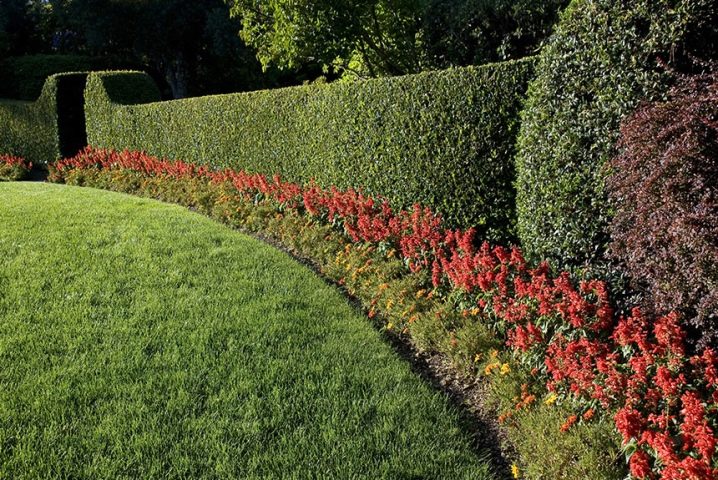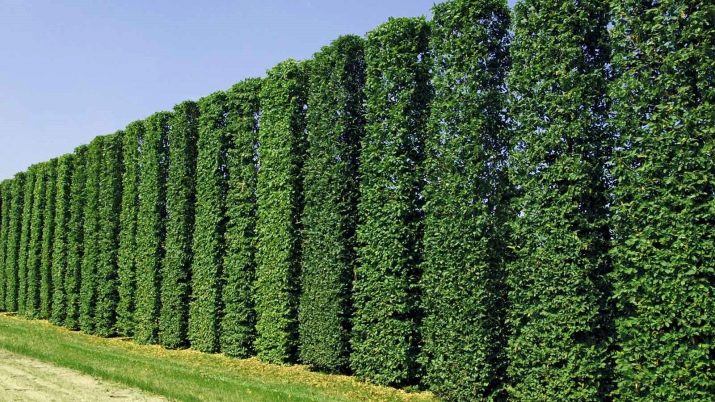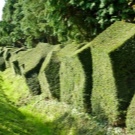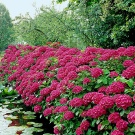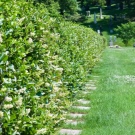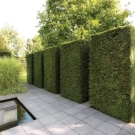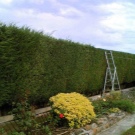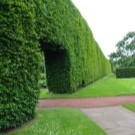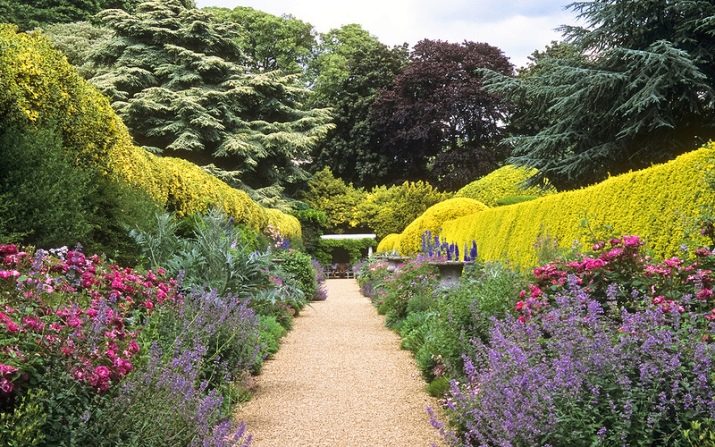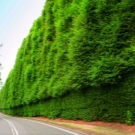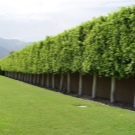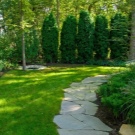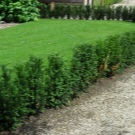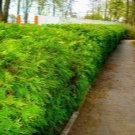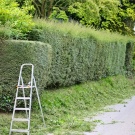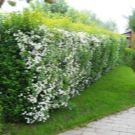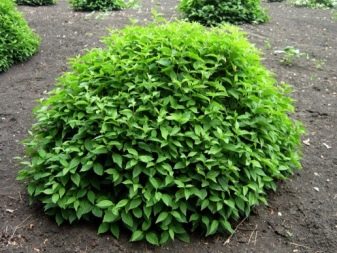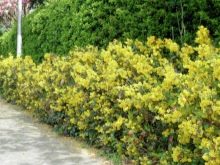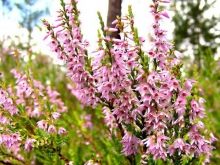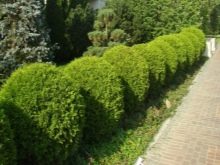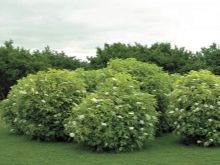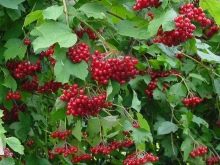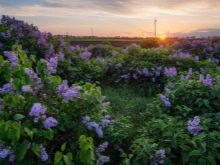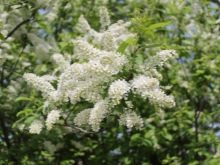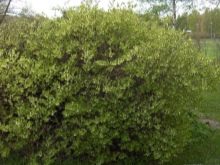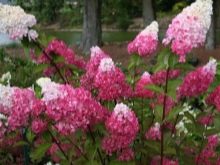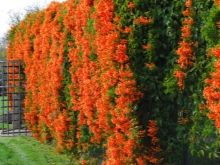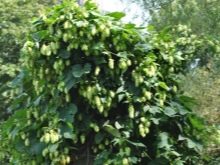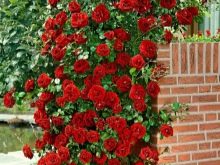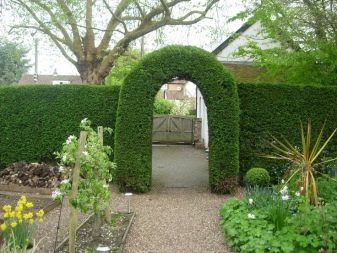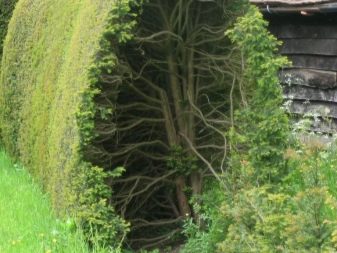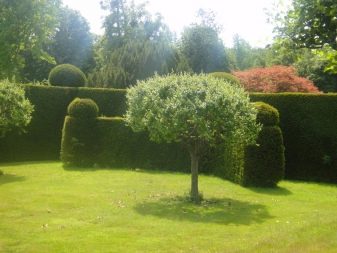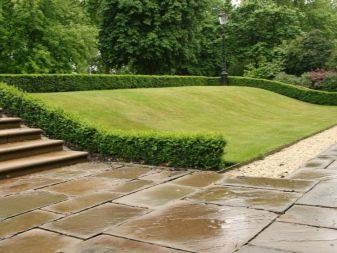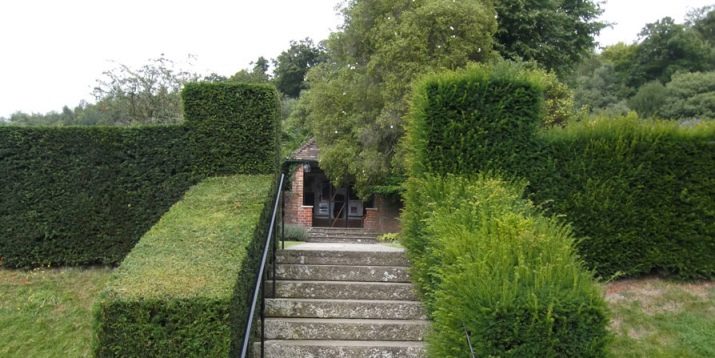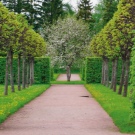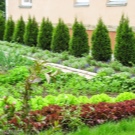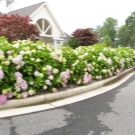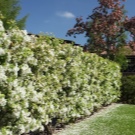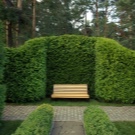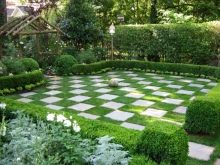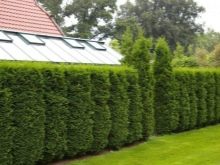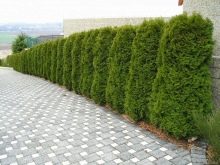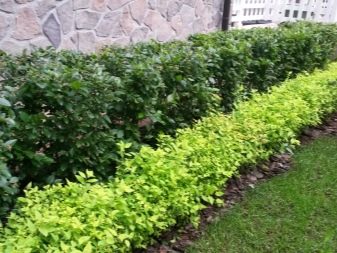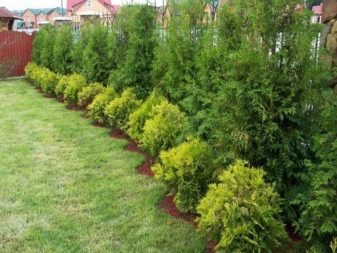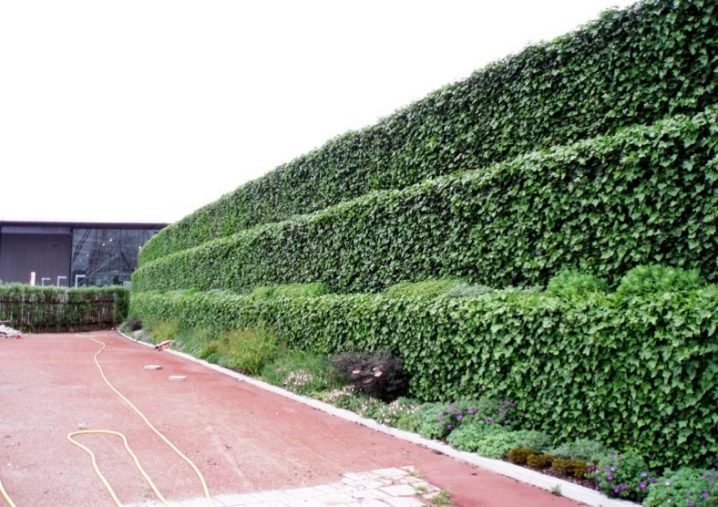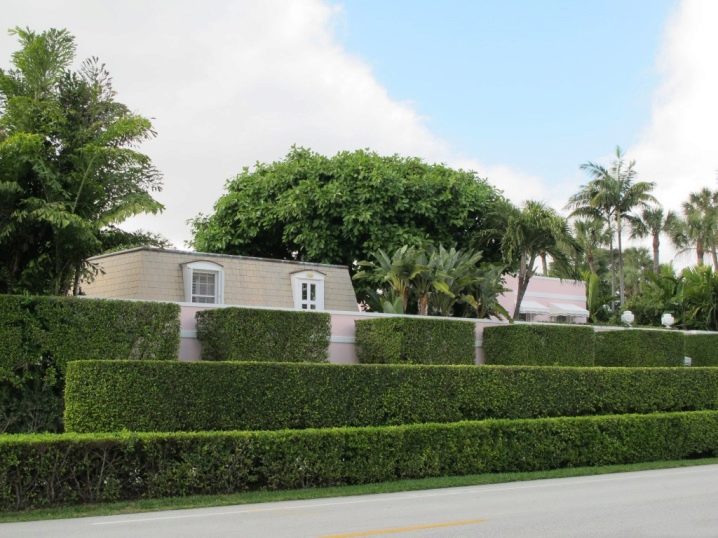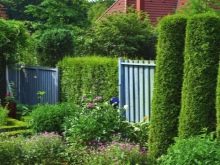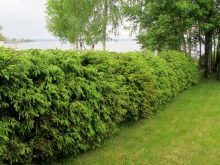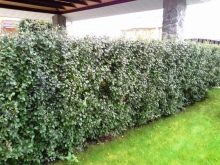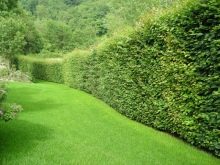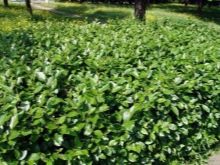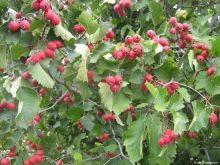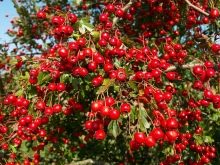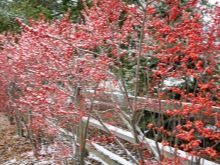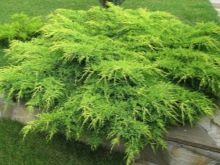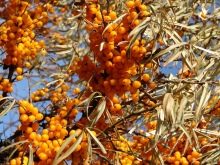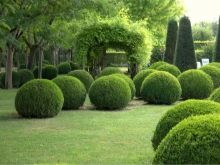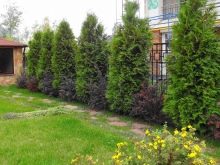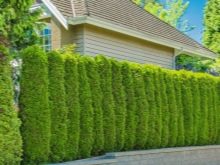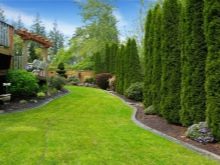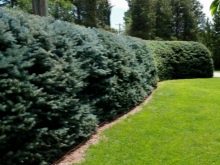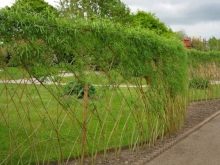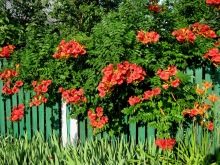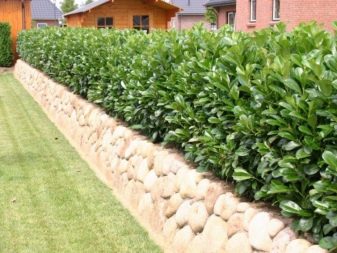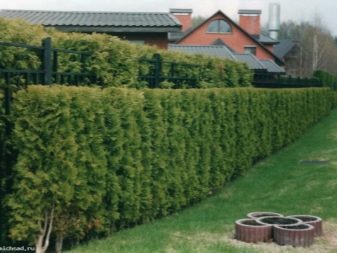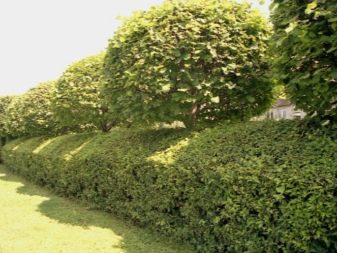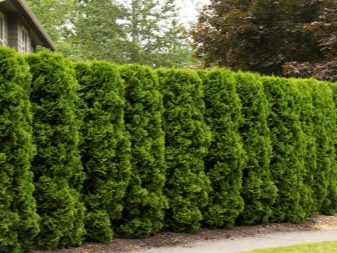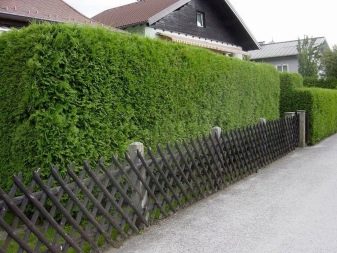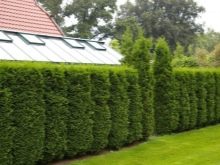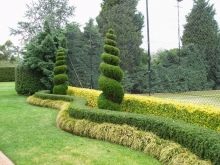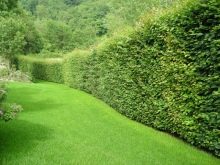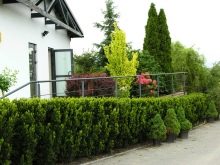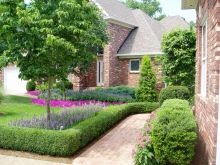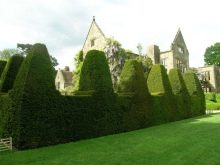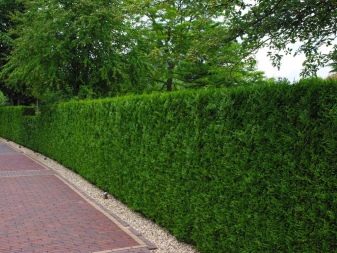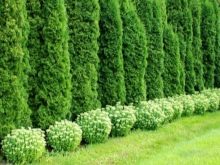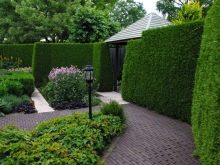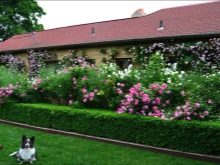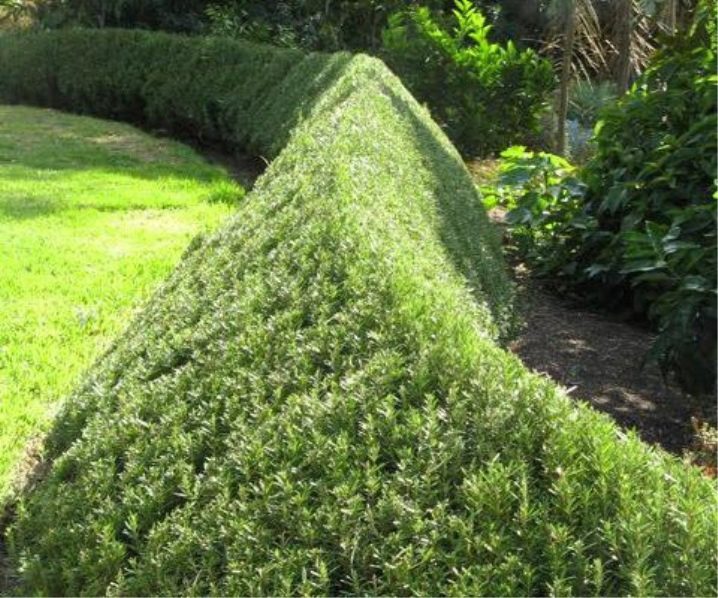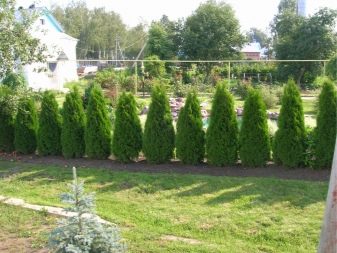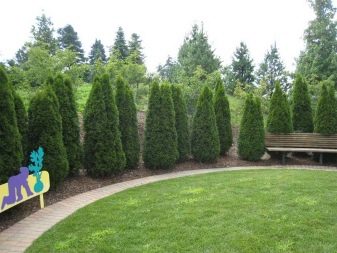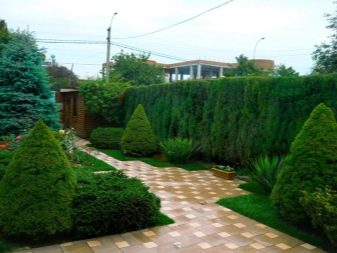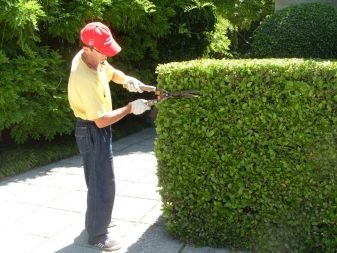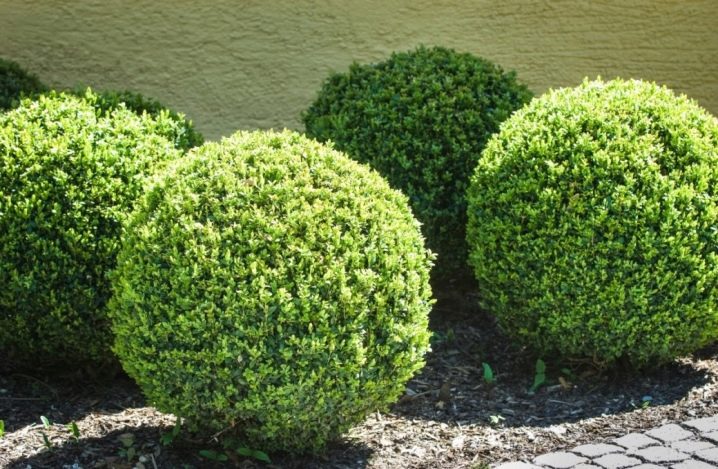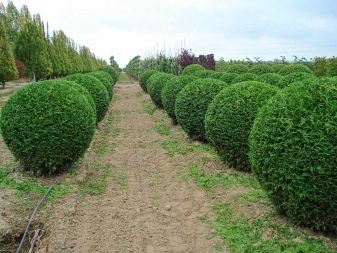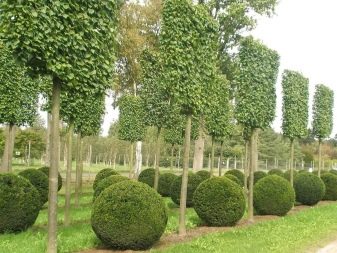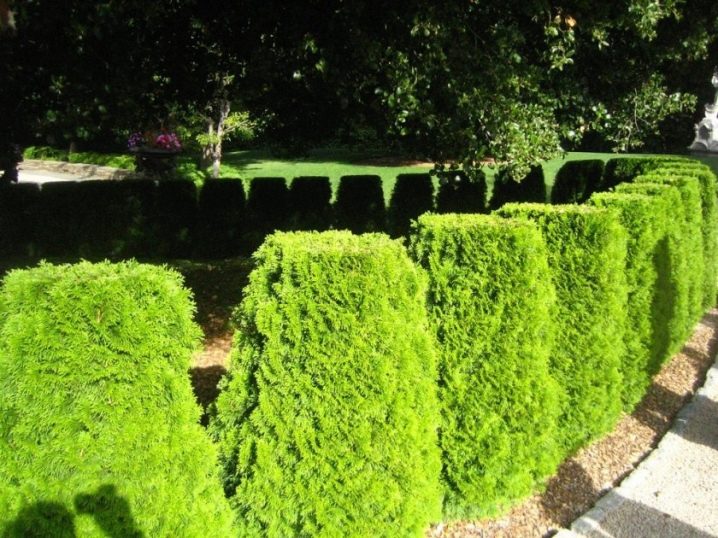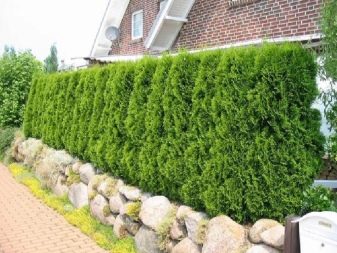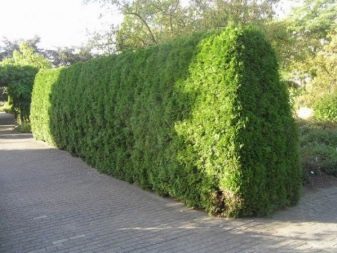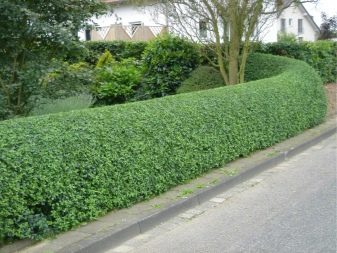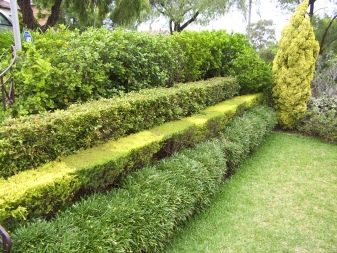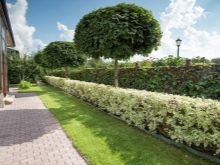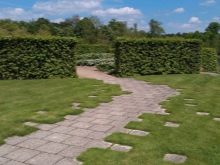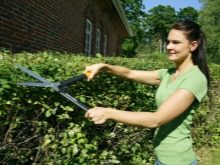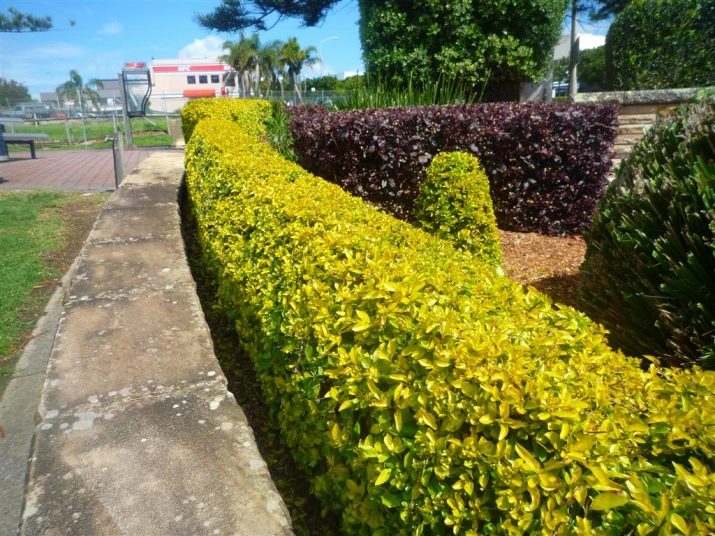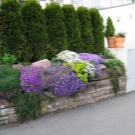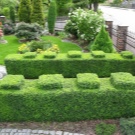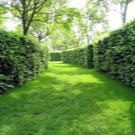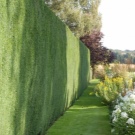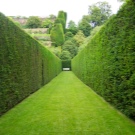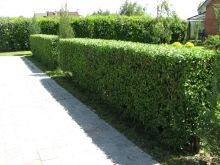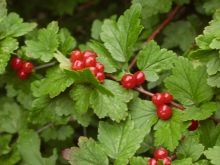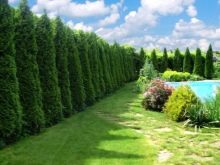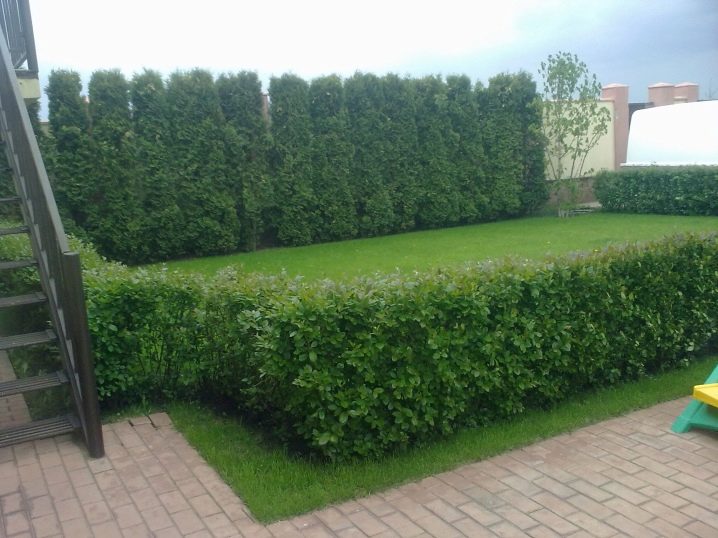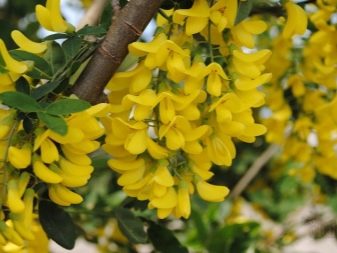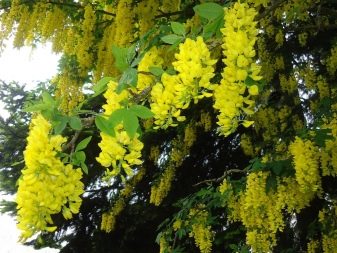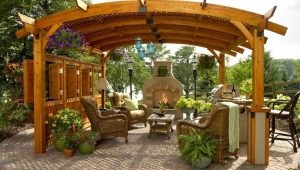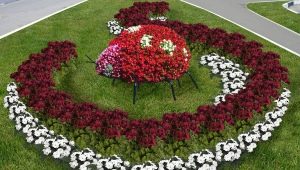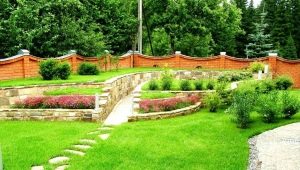Hedge: green fences in landscape design
The hedge has become a worthy alternative to metal and concrete fences. Green fences in landscape design perfectly cope with their function, and also act as a decorative component.
Special features
The hedge was first used by the French, who about 300 years ago began experimenting with decor in their gardens. Plant stands were used as a decorative element and helped protect the area from the wind. To keep the bushes attractive, they were constantly looked after and followed. This tradition has been preserved to the current time.
Features green fence:
- A hedge represents planted shrubs or trees in one or two lanes. Some components are trying to plant closer to form an impassable green fence;
- The height of such plantations may have different sizes. There are low hedges, the height of which does not reach 100 cm. If the decorative fence exceeds the mark of 150 cm, it is classified as medium. Vegetation with a height of more than 2 meters is considered high;
- Vegetation growth rate is the personal choice of a gardener. Shrubs and trees that grow slowly will need less cutting. Fast growing vegetation increases the choice of design. Fruit and flowering crops that grow in free form without pruning are combined in an artificial hedge. This rule applies to the preservation of yield and visual attractiveness;
- When choosing a view of your future hedge, rely on the desired result. As a rule, a perennial wall consists of shrubs of the same type with the most beautiful representatives. If you could not decide on the type of plant, try to create a combined fence;
- to create a mixed fence you will need to draw up a preliminary plan;
- combining plants, try to create a sense of their mass and uncontrolled growth in the territory;
- Many people like the evergreen hedge, which retains its aesthetic properties in the winter season. The creation of such a fence is made from coniferous shrubs of decorative type.
Advantages and disadvantages
A hedge is a planting of trees or shrubs planted along the same line. Such planting can perform a protective and decorative function. This type of fence has advantages and disadvantages that every gardener should be familiar with.
Advantages of live fencing:
- vegetation fence looks attractive;
- such a decision has a beneficial effect on the human nervous system;
- green hedge creates an individual atmosphere, full of harmony;
- an increase in the level of oxygen along with the enrichment of it with essential oils;
- You can easily change the look of your garden. For this you need special scissors;
- green spaces are able to protect your site from dust, wind streams. The similar wall acts as sound insulation;
- trees are among the best solutions, due to which birds will fly to your site, destroying garden pests;
- such a fence is created for a long time;
- you do not need cash for repairs;
- a high hedge creates a shadow, next to which you can equip a recreation area or other functional areas.
Despite numerous advantages, the live fence has disadvantages:
- in order for the planted shrubs to perform the functions assigned to them, it will be necessary to wait several years until they become the required size;
- shrubs need to be pruned regularly;
- if several trees die, you will not be able to quickly fix the problems that have appeared.
You can choose different types of hedges. The width of the landings depends on your wishes and the area of the site.
You can only plant one row of shrubs that will create a dense wall. From two rows you can create different live fences, the type of which will depend on the characteristics of your site.
Zoning area
Living wall can be located not only around the perimeter of the site. You can choose bushes of different plants for zoning the space into functional zones. Territory planning with the help of vegetation helps to make the setting spectacular and attractive.Such zoning has an important practical purpose.
Dense wall of wood around the playing area It is able to provide protection from the sun's rays, and also ensures a peaceful pastime for adults. Small children will not be able to climb over dense plantations and get lost in the area. Among the attractive shrubs kids will feel calm and safe.
Choosing plants for the children's area, you should avoid prickly bushes, as well as representatives with inedible fruits.
The height of the fence will depend on the area of the children's site, the age category of children and the taste preferences of adults. Many prefer deren, as it is frost-resistant bushes that perfectly take root in the areas and are unpretentious in their care.
Many choose bushes for sea buckthorn zoning. These shrubs look attractive and delight the eye with its decorative properties. For the recreation area should choose picturesque shrubs, which are distinguished by lush flowering and pleasant aromas.
Height
Planting may have different heights.It is necessary to decide in advance how you see your green fence in order to select the necessary varieties.
Low
Small hedges are suitable for underlining flower beds or zoning a site into several functional zones. Such fences have a height of 20-70 cm.
To create the base should be planted the following types of vegetation:
- Chubushnik "Gnome". For this low-growing plant is characterized by a dense crown without flowering. Thanks to sufficient density, you can trim the branches, giving the bushes the desired shape;
- Japanese quince. This is a beautiful plant that is known to many for its aesthetic characteristics due to its dense foliage and spring flowering. In the fall you will be able to collect delicious fruits from the bush. A thick crown should be thinned once every couple of years;
- ling. You can use such an evergreen shrub for a low hedge. Heather is valued for its ease of pruning and for its decorative qualities that increase with flowering shrubs;
- Alpine willow is unpretentious. It can grow on any kidney and with its help you get a beautiful hedge.Despite the fact that this plant is classified as undersized, you will need to cut it regularly;
- hollow mahonia. This plant variety loves shade and can grow on any soil. Despite the fact that this variety of plants is purely decorative, its fruits can be eaten.
Average
High-quality plants, the height of which does not exceed 2 meters, will help to form a hedge. Such a decision will be able to protect the fruit vegetation from strong winds and hide your territory from the curious glances of passersby. Average living fences land from the following vegetation:
- The elder is fast growing, so she will need frequent formation. This plant is particularly attractive due to the beautiful inflorescence and berry fruits;
- tree hydrangea is famous for its abundant and long flowering period. The shrub has a hemispherical shape and grows to a height of 1.5 meters. Purchase quality seedlings from proven breeders who grow hydrangea in your climate zone;
- Kalina can take any form after pruning. This plant will delight you with its bright greens and lush flowering throughout the season;
- spirea. This deciduous shrub has many kinds of varieties. The plant quickly grows, so after three years you can get an attractive decorative fence;
- lilac bushes create an impassable hedge. This solution can decorate your site during flowering.
High
The height of such a hedge is 2-6 meters. Such a solution will help you to hide the area from prying eyes, protect the area from winds and dust, and also create a shadow for the necessary area. To create a living fence, you need the following types of plants:
- bird cherry Thanks to a wide selection of varieties, you can choose the best option for your site;
- Honeysuckle has decorative properties due to beautiful leaves and bright berries. Such a plant loves shade and is resistant to frost and drought;
- panicle hydrangea. This plant variety grows to 8 meters. The ornamental qualities of the shrub are enhanced by flowering;
- berry yew belongs to the category of slow-growing trees. This plant has a red color and is characterized by its bactericidal properties. Due to the aesthetic properties of the yew, it often creates labyrinths in a garden and park area.
To create a decorative fence, you will need perennial varieties of climbers and tree vines. They help to hide some areas on the site, and also form a chic hedge. When choosing such a fence, please note that you will need a solid metal frame. The following plants are popular:
- liana kampiss. This is a giant plant that has sprawling branches and colorful flowering. It is not afraid of drought, but in order for the flowering to be long, the vine must be watered often;
- Hop ordinary loves warm and humid climatic conditions. Due to the dense greenery of the plant completely covers the frame, and ripe buds will give the original appearance of your hedge;
- Vertical gardening can be created from climbing roses. To plant such shrubs should be in a warm and mild climate zone.If your site is located in the northern region, carefully select the appropriate plant varieties;
- Clematis belong to the category of fastidious vines of extraordinary beauty. They will help create a unique fence, but this will require a lot of effort.
What plants to choose?
To create a living fence on your site, you can use different varieties of plants. Some cottage owners choose hedges from small trees, others stop at tall plants. The choice should depend on your financial soundness and taste preferences.
The selection of vegetation for a live fence should be made on the basis of several indicators:
- what type of hedge you want to get;
- whether your plants will need a haircut or they will grow in a free form;
- what height a living fence should have;
- green fence function;
- characteristics of the soil on which the trees will grow;
- features of the climate in your area.
Many people choose conifers. They are popular in hedges, as they retain their appeal throughout the year.When choosing vegetation, remember that you can only use ornamental varieties for a living fence.
Consider the growing conditions of each variety, as there are coniferous shrubs that require shade, while others love the sun. Planting shrubs keep a distance of 25-55 cm.
Experts do not advise planting coniferous shrubs in areas with clay soil. It is also not recommended to resort to this type of plants if the groundwater is located near the surface.
Single row and multi row options
Many believe that the hedge is a single design that can not exist as a separate option. Green fences can have several functions:
- outdoor fence;
- component for zoning a plot into functional zones;
- use as a barrier around the flower bed, garden paths.
Green hedges may vary by planting method.
Single row
A single row hedge is a densely planted densely branched shrub. As a rule, disembarkation is carried out along a fence, footpaths or as a division into functional zones.Looks nice in this layout hornbeam ordinary. It is a deciduous plant that is easy to form. With it, you can create an original pictorial design.
Double row
The two-row hedge fully meets architectural and artistic requirements. As a rule, it contains one or several types of plants that are planted in two levels. With this solution, you are guaranteed to cover your site from exhaust gases, strong wind and dust. In such compositions, you can use only those varieties of bushes that are well tolerated haircut and unpretentious in the care. Otherwise, the hedge will lose its appeal from the effects of car exhausts and gusts of wind.
Three-row
Three-row green fences most often land near the road. Such a fence requires significant financial costs and effort. It is possible to have such plantings only on a large area.
Vegetation is arranged in tiers: low-growing shrubs are present in the foreground, and higher representatives should be planted on subsequent rows.For this purpose, suitable turf, hazel. You can replace these trees with lindens. The small-leaved linden which is distinguished by unpretentiousness participates in creation of live fences. Some people plant Orebro, Palida or Crimean varieties. The middle row can be arranged with the help of lilac, which will act as a barrier against dust and dirt.
A combination of contrastingly colored vegetation will look good in hedges of many tiers. You can combine deciduous and coniferous trees. To give your fence naturalness, you can plant trees in one row. They should be located on the second or third tier.
Sometimes shrubs and trees are unable to protect the site. In this case, applied railing, which will close the passage of people on the territory. This method allows you to save ornamental plantings.
Shrubs
Evergreen shrubs have always attracted the attention of landscape designers with their attractiveness at any time of the year. Many gardeners choose coniferous shrubs, as these plants look gracefully even in winter and do not require frequent pruning.When choosing plants, you should take into account that even fast-growing shrubs acquire their shape after a while.
Experts recommend choosing plant names with the help of experienced landscape designers.
If you want to plant a kizilka brilliant on your plot, keep in mind that it is the complete opposite of the usual cotoneaster. This variety will not be able to please you with tasty berries, as it is used strictly for decorative purposes.
Cotoneaster is a shrub that is formed on upright, tightly spaced stems. Shrub grows to 2 meters, but it should be acquired only in the form of a sapling. These plants have a rather fluffy and dense crown.
For cotoneaster should constantly care. Do not neglect irrigation, soil loosening and shearing. These manipulations will be required until the shrub grows. Adult bushes are unpretentious.
Barberry bushes are easy to cut. This plant is characterized by rapid growth and fragrant berries, which gourmets add to jam or pilaf. Adult plant reaches a height of 0.3-3 meters.Barberry can grow on any soil, is resistant to drought, but does not tolerate excess moisture.
Spirea belongs to the category of unpretentious shrubs that are not afraid of strong frosts, gassed air. Such a plant can survive even in big cities. Spirea blooms from early spring to late autumn, filling the air with pleasant aromas. There are several varieties of shrubs that differ in the color of the leaves and the shape of the bush.
A hedge can be created from hawthorn bushes. For this purpose, you will need certain types of plants that are resistant to harsh climatic conditions and have a thick crown that can be cut.
Decorative qualities of hawthorn are manifested all year round. In the spring you will be pleased with the white color of its flowers, and in the summer you will be able to admire small leaves. In winter, hawthorn fruits scarlet berries.
Such a shrub loves sunlight. Consider these features when landing, as partial shade can lead to the fact that the hawthorn will not bloom. However, such a plant can survive even severe frosts.It is best to plant the plant in the spring.
Keep in mind that hawthorn does not fall into the category of fast-growing shrubs, and it may take about 10 years to grow a full-fledged live fence.
There are several other popular shrubs that are often involved in creating a hedge:
- juniper can be obtained cohesive plantations of small size. It can also be planted alone for decoration. Creeping plant varieties help in places where you need to install a barrier or to strengthen the slope;
- for similar purposes, you can use sea buckthorn. This plant is widely known in the medical and food industries. For him, you should choose warm areas in which there is a sufficient amount of light and there is no strong wind. Among the disadvantages of this shrub include its slow growth;
- planting panicle hydrangea can only be done on fertile soil. The plant will need a darkened place to make it feel comfortable. Hydrangea has a fast and abundant flowering, so some varieties of this shrub should be pruned annually so that it does not break under the force of its own weight;
- boxwood is a leader among the bushes that are used in the design of summer cottages. It has gorgeous foliage that pleases the eye all year round. This plant is used by almost all gardeners and designers.
Trees
Trees, as well as shrubs, can act as a green hedge. It is best to purchase low-growing plants, as they are distinguished by elegance and efficiency. Many gardeners acquire coniferous trees. If you look for a similar option for yourself, buy only decorative varieties.
If you decide to plant on your territory a fence that will change its appearance each season, choose deciduous varieties. When choosing vegetation, consider that those that grow in your climate zone are best suited. Foreign representatives may have a fabulous price that does not guarantee the survival of the tree in your area.
When choosing climbing crops, make sure that the vegetation cannot harm the fruit plants that grow on your beds. To enhance protection against intruders, you will need to add prickly plant varieties to the live fence.
There are several varieties of trees that you can grow for a hedge at your summer cottage:
- Spruce is popular when creating hedges. They have decorative qualities, improve air quality and are capable of suppressing bad odors. Spruce well holds rain, snow, practically does not undergo diseases and does not require frequent haircuts. However, such a plant does not grow well on dry soils;
- Willows are the simplest trees with which you can create a live fence. They are characterized by rapid growth, so you do not need long to wait for the growth of your hedge. Such a plant requires constant care and care, so be prepared to provide it with the proper level of attention;
- Kampis krupnotsvetkovy also popular among summer residents due to the rapid growth rate. The plant is a tree-vine, which can stretch up to 15 meters. Kampis wound spirally on a support pole and after hardening does not lose its peculiarity. Flowering in this tree is observed throughout the summer and the first month of autumn. This condition is met if you have planted a tree plant in a fairly lighted area with neutral soil;
- The rapid growth rate attracts, but Russian gardeners prefer frost-resistant options. As a vivid example, we can consider medicinal laurel cherry, which adapts to the shade and survives even in severe frosts;
- Thuja is also distinguished by unpretentiousness, if you observe the conditions of planting and caring for a tree. The plant does not like shade and too bright sun. It is recommended to have such a fence in the penumbra;
- fine-leaved elm is considered long-lived. The tree is able to live up to 400 years and grows up to 40 meters in height. This species is distinguished by a dense crown and attractive flowering;
- Mountain pines are often used as green fencing in summer cottages. Different varieties differ from each other, therefore, it is possible to create an original composition only at the expense of such trees. As a dominant in a hedge, you can plant a Columnaris, which is distinguished by a conical crown. Such a tree easily survives trimming, but quickly dies in severe drought.
Any tree that will be located next to the fence can be attached to it with the help of a wire.
This solution is reliable and will help you provide an additional level of protection against external attacks.
Landing rules
If you want to create a good green hedge with your own hands, take seriously the issue of choosing crops. Focus on unpretentious varieties of plants that require minimal maintenance, grow for a long time and will be able to provide a uniform green wall.
To create a hedge occurred without errors, learn the rules of planting vegetation:
- choose plants that can tolerate winter frost, early frost and a sudden return of cold weather;
- If you are just starting to learn the basics of gardening, you should not choose complex plants. It is better to plant simple trees, which include spherical willow. It adapts well to the Russian climate and has an attractive appearance;
- To plant a tree, you will need to cut a couple of rods from an adult representative and transplant them into the soil. Next spring you can admire the result of your work;
- even the most unpretentious plants can be destroyed if we neglect the preparation of the soil.It is necessary to ennoble the land in the second half of autumn, pulling the rope in the place where the fence will be located. With the help of a precisely marked line, you will not be able to stray off the course when you need to dig a ditch;
- The width of the trench will depend on the number of strips of trees that will be present in the hedge. At least 500 mm should be allocated to each row. Before planting a seedling, fill the well with a fertilizer;
- it is impossible to transplant coniferous shrubs that have not turned three years old. Absolutely adult representatives are also not suitable for work;
- many plants can break down under their own weight. You can easily replace the problem area, but landscape design doesn’t approve of extra gaps and changes. To eliminate the likelihood of destruction of shrubs, it is recommended to install supports;
- long boards can be used as supports, which will be located 0.5 m above the ground. Treat this material before use and secure.
For planting shrubs that will participate in the creation of a hedge, there are separate rules:
- the neck of the rhizome should be located at ground level or it can be deepened by 10-20 mm;
- You can determine the correct gap between the points with the help of the height of the plant, its design and the operation of the root system. The slower the shrub grows, the more you can bring the bushes together;
- for single-row scheme provides a distance of 200-250 mm;
- for double-row hedges, observe the minimum distance between the notches of 0.3-0.5 m. A similar interval should be present between the lanes.
This step-by-step instruction will help you carry out a competent planting of vegetation and avoid the mistakes that inexperienced gardeners often make.
Original ideas haircuts
Most novice gardeners think that before you give the necessary shape a hedge, you need to wait until the trees grow. You can wait a couple of years only when planting conifer varieties. Deciduous plant types should be pruned. immediately after disembarking. The next pruning occurs in the fall season.
If two years are not made pruning, it will be impossible to shape the grown tree.
Before you start forming, you will need to decide on the future shape of your hedge. Consider the fact that vegetation with a straight top will need to cut more often. Otherwise, the hedge will lose its decorative qualities.
The upper zone accounts for the fastest growth, therefore in this part there is a violation of the lines, despite the normal state of the lateral sides. If you do not have the opportunity to constantly trim a hedge, you will fit the form in which there is a rounded or triangular tip.
Triangular
First of all, it will be necessary to shorten the shoots during the first year. If you work with shrubs, which are realized with a naked root system in bundles, you can cut to half their height. If you plant container type plants, cut off 1/3 of the height. After a strong pruning, there is an increased growth of new shoots, which by the end of the summer season are gaining their density.
At the second stage, you will need to form a frame for green fencing. If you look inside the already finished fencing, you will notice a large skeleton of naked shoots, from which many young people are drawn, with numerous foliage. You will need to create a similar frame.It must have a considerable thickness in order for the crown to be dense and opaque. This process is performed in the second year after planting and is carried out for 3 years. The frequency of trimming can reach 5 times in one season.
You need to get the required level of skeletal thickness of your hedge. Trimming should be based on the selected shape. Stick to the selected trimming method by slightly raising or lowering the top point of the triangle. The action depends on the planned length and thickness of plantations. With each subsequent year, you will need to cut 4 cm higher. This method allows you to actively grow new shoots along with the formation of new forks.
When you get the required level of density of shoots, you can begin to forge in height. At this stage it is required to raise the trim height by 10 cm.
Fast-growing shoots should be pruned until the side has reached the required density. Foliage should tightly fill the fence.
Spherical
Many prefer honeysuckle, which is the legendary representative of garden vines.This plant has long been used by gardeners and attracts the attention with its dense foliage, fragrant flowering. Honeysuckle - unpretentious plant that can be used as a green hedge.
Such bushes have a compact size and spherical shape. The optimal location for the location of such plants - along the tracks and along the perimeter of the site. Honeysuckle grows on its own without pruning. To cut should be resorted to the seventh year of the life of vegetation, when the bushes become too thick. Once every three years, a rejuvenating pruning culture should be carried out by thinning.
It is not recommended to cut the skeletal branches completely, as the crown is slowly recovering. Before pruning, remove the aging branches, and then proceed to decorative processing.
Cone-shaped
Many designers planted on the areas of spherical thuja, which look attractive when trimming to a cone-shaped. To get this haircut, you will need to trim three times per season. For work, it is necessary to tie a rope to the top of the tree, the other end of which is attached to a peg buried in the ground.With this action you can get a triangle. To produce a haircut should be on the side of the triangle. Properly created cone will be formed by moving the peg around the tree.
To get a spiral outline, you will need to wrap the plant with adhesive tape or decorate it with water-based paint. Take into account in your work the angle of the spiral. With this method you can make smooth lines, and the artificial form will look spectacular and attractive.
Breaking willow is a plant that must necessarily undergo formation. In the first year, the tree does not need to be touched. By pruning can proceed when the height of the bush reaches 1 meter. The procedure consists in pruning young shoots by 20 cm. When performing these actions, it should be left at the ends of the buds. Pruning shoots should be made at an angle.
Observe the necessary distance between the cut and the kidney. If you cut a branch too close to it, it may dry out or freeze. When choosing a long distance you will get a stump, which can get an infection.Many novice gardeners are afraid to prune shoots so as not to spoil the tree. But without this procedure, willow will not find its attractive forms.
Blackberry bushes should also be constantly formed. This plant has flexible stems that are formed by separation into fruiting and young shoots. To get a harmonious plant, you can use three types of formation: fan, rope and weaving in a certain direction or in opposite directions.
Caring for a blackberry can cause a lot of trouble, but you should not neglect this procedure. The first pruning should be done two years after disembarkation. Further manipulations are carried out once every two years.
You will also need to prune each spring, shortening too long stalks with dried tops.
Tips and tricks
Tips from experts will help you to ensure planting due care and maintain their attractiveness for a long time:
- no pruning is recommended during the first year after disembarkation. Plants must grow strong before winter comes;
- observe moderation in watering, because you grow non-vegetable crops in the beds;
- Hedges required fertilization. Watch the dosage, as excess fertilizer can cause harm;
- to acquire coniferous bushes and flowers should be in the garden centers and greenhouses, which are located in your area;
- most vegetation has an unpretentious character. You will need increased attention only when choosing the right place for landing. Then they make only trimming, which will help to keep the appearance of the fence attractive.
How to choose plants for hedge:
- choose the type of plant you need based on the characteristics of your soil, type of lighting, climatic conditions and the amount of precipitation in the region;
- soberly assess your capabilities. Decide how much time you are willing to spend on caring for plants. Depending on the type of vegetation, you will need different time costs. If you do not plan to spend a lot of time on pruning, choose simple options that require only periodic formation;
- a beautiful hedge can form a few years after planting,if you take care of her;
- The decorative qualities of a green fence are an important step when choosing vegetation. Decide on the appearance of your hedge and select the right plant varieties. For such a fence suitable decorative trees, shrubs and climbing plants.
In the world of gardening there is a wide choice of vegetation to create a living fence. You will need to familiarize yourself with the type of perennial shrubs that undergo formation. For example, irgi bushes can become a worthy alternative to the fence, and with the help of climbing roses, you can create an impassable wall that will delight you with beautiful flowers.
After you make a choice, learn the details of caring for a particular type of plant.
Examples in landscape design
There are many original ideas that will help create on your site a unique hedge. For example, alpine currant will help you get an attractive wall that will delight with its decorative qualities throughout the season. Such a plant is rarely found in gardens, but deserves your attention.Currant bushes form a low hedge, which will look attractive along the central paths or near the walls of buildings.
From the hazel can get a beautiful fence. Choose an ordinary shrub that does not bear fruit nuts. Selected bushes have beautiful leaves with the correct shape, due to which a winning appearance is formed. With proper formation, you can get a real living wall, in which there are no gaps.
If you want to plant an unusual plant in your summer cottage that can turn into an original figure, pay attention to the spherical maple. With the help of such a magnificent plant you will get an original atmosphere on your territory.
From the yellow acacia you can get a beautiful hedge. The plant has high decorative properties, due to which the wall will attract the attention of others. Attractive flowers will delight you with their appearance, and an impassable wall will become a reliable protection of the territory.
You will learn more about planting and caring for a hedge in the following video.
